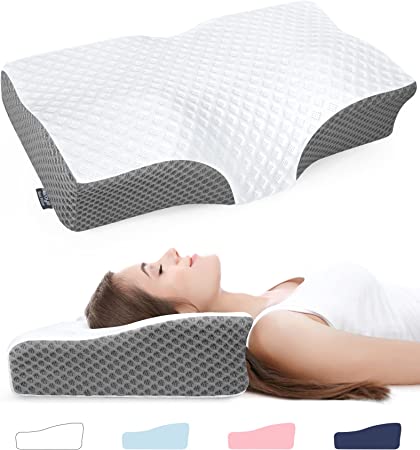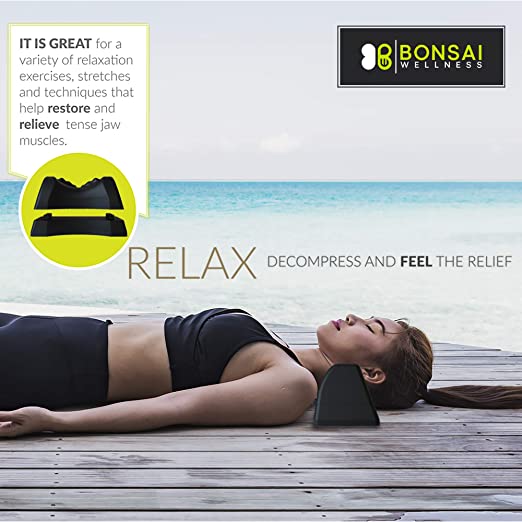Best way to sleep with occipital neuralgia
Every year, millions of people are afflicted with this illness. Understanding occipital neuralgia and the impact it can have on your ability to get a good sleep is the goal of this article. We will also discuss the recommendations of chiropractors on how to sleep well.
What exactly is Occipital Neuralgia?
The occipital nerves emerge from the space between the vertebrae in the neck, travel through the scalp muscles, and finally exit the skull. They occasionally extend almost to the forehead, but they do not touch the face or ears.
These occipital nerves can give the brain electrical zaps or tingling messages when they are injured or inflamed. The pain from these nerves can radiate along the length of your neck and head, making it uncomfortable to be touched. Feelings of numbness and acute sensitivity are experienced by different people.
Diagnosis of Occipital Neuralgia
Your ENT physician may palpate your neck and head and may get the idea that you experience tenderness in the vicinity of the occipital nerve. Nerve blocks are commonly used as an initial course of treatment. If the pain and tenderness subside after this treatment, your doctor will likely diagnose you with occipital neuralgia. At this stage, your physician may consider alternative, more permanent means of assisting you.
Your ENT physician may give pain-relieving drugs to calm the nerves that are causing the pain. They may also utilize steroid injections, and botulinum toxin, or discuss the surgical possibilities with you as additional treatment choices.
Sleeping Tips for People With Occipital Neuralgia
If you have occipital neuralgia, there are certain things you may take to help you sleep better. If the discomfort does not go away and you are having trouble sleeping as a result of it, you should consult an ENT specialist.
- 15 minutes before going to bed, apply a cold or cool compress to the back of the head and neck. The discomfort caused by inflammation and soreness will be alleviated as a result of the cold.
- Utilize a cushion that provides adequate head and neck support. If you haven’t yet tried one, think about doing so.
- Pillows should be used to prop up the head in any sleeping position other than the back. Head elevation relieves pressure on the spinal cord and neck nerves.
- Caffeine and alcohol can make it difficult to get to sleep and stay asleep, so it is advised to avoid them in the hours leading up to bedtime.
Top 3 Medicated occipital neuralgia Pillows recommended by Chiropractors:
Is There a Best Sleep Position for Occipital Neuralgia Patients?
Occipital neuralgia does not have a single optimum sleeping position. Many people, however, find relief by utilizing a cervical cushion and elevating their heads while they sleep. While some people prefer to lay on their backs, others prefer to sleep with a pillow in between their knees. It is mostly recommended to try out a variety of different approaches until you find one that suits you the best. Consult your ENT physician about sleep strategies if you get occipital neuralgia.
What if the medicine does not help me?
If your issue does not improve, an occipital release surgery may help. To assist you in decompressing the bigger occipital nerves, ENT specialists can undertake surgery.
The back of your neck is opened by an incision. After that, surgeon fix the compression of the nerves. Additionally, the surgeon might operate on other nerves that could be problematic for you. The typical recovery time for this procedure is two to four weeks, and patients can return home the day after surgery.
Following surgery, you will most certainly have some discomfort, but it will most likely be manageable, including pain and swelling. You are also required to take some time out of work as well.
Why is a Cervical Pillow Used?
One of the best pillows for neck and head support is a cervical pillow. It aids in maintaining spinal alignment, which can lessen discomfort. Those with occipital neuralgia may find relief from the pressure on their cervical nerves with the use of a cervical pillow. The quality of life can be enhanced and pain can be decreased by having your spine properly aligned.
Best Recommended Pillows For Occipital Neuralgia
Rank
Image
Features
Price
Frequently Asked Questions
What are the signs of occipital neuralgia?
Occipital neuralgia is characterized by a persistent aching, burning, and throbbing pain, as well as a periodic shooting pain that, in most cases, originates at the base of the head and travels to the scalp on a single or both sides of the head. Some other symptoms often include trembling or numbness in the affected area of the head. Patients frequently complain of discomfort behind the eye on the side of the head that is injured.
Can occipital neuralgia be treated with physical therapy?
It is possible that bad posture, which puts pressure on the nerves, is responsible for some occurrences of occipital neuralgia. The purpose of the chin tuck is to strengthen the muscles that keep your head and neck in proper alignment with your shoulders and neck, as well as to stretch the muscle and connective tissue in the troublesome area.
Is it possible to treat occipital neuralgia?
There is no conventional treatment for occipital neuralgia. However, the discomfort may be managed, and there are ways to avoid painful episodes. Identifying and treating the root cause of occipital neuralgia can provide efficient relief from occipital neuralgia and in some cases surgery is also a feasible option to get long term relief from this illness.
What causes occipital neuralgia?
The most prevalent cause of occipital neuralgia is compressed nerves at the base of the neck. Sometimes this is the result of a person’s neck muscles being overly contracted, especially in the upper back region. In some situations, it might be triggered by head or neck trauma. Another prevalent factor is a persistent strain on the neck.
What vitamins work best for treating occipital neuralgia?
Patients who suffer from occipital neuralgia may get relief from their headache symptoms by consuming anti-inflammatory foods. This is because the inflammatory process that is connected with occipital neuralgia also causes headache pain. Calcium/magnesium supplements are frequently taken for as a anti inflammatory remedy.
How to handle occipital neuralgia at home?
You may attempt the following home remedies:
- Put some heat on the area around the neck.
- Take a nap in a peaceful space.
- Give your sore and tense neck muscles a massage.
- Take a nonprescription anti-inflammatory medication such as naproxen or ibuprofen.
What role does caffeine play in occipital neuralgia?
Caffeine deficiency causes a widening of blood vessels, an increase in blood flow, and a pinching of nerve endings. Caffeine should therefore be avoided by those who have occipital neuralgia. Dependence can cause headaches, acute inflammation, and worse sleep quality.
What is the duration of occipital neuralgia?
The discomfort caused by occipital neuralgia can persist for just a few seconds or it can continue for several hours. Most people find that noninvasive treatments reduce their symptoms. Usually, the discomfort subsides as the nerve injury improves or lessens. In most cases it goes away after a month or two. In a few exceptional circumstances, it might go beyond a year.
How to massage occipital neuralgia?
Put some light finger pressure on your skull base. This massage helps alleviate stress and relax tense muscles. It is also advised to try lying on the back with a rolled-up towel supporting the neck and head. A light massage can be given by applying pressure with the cloth.
What is bilateral occipital neuralgia?
Occipital neuralgia is a specific kind of headache that causes pricking, throbbing, or electric-shock-like discomfort in the neck, behind the ears, and back of the head usually on one side of the head. Occipital neuralgia pain typically starts in the neck and moves upward from there.
Does occipital neuralgia go away?
The condition of occipital neuralgia is not fatal. Most people can successfully manage their pain by resting and using medications. However, let your doctor know if you continue to feel pain. They will aim to rule out any underlying issues that may be contributing to your suffering. You should be “cured” if you can identify and deal with the root source of your occipital neuralgia.





